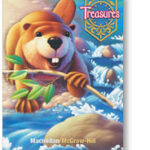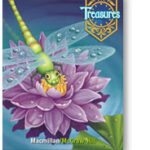Grade 2 Short Stories Comprehension – The Moon. Easy short stories with comprehension for Second graders. Free eBooks/Flipbooks and PDFs
The Moon – Short Stories Comprehension
Grade 2 Short Stories Comprehension – The Moon
Grade 2, Unit 5
Macmillan/McGraw-Hill’s Treasures online resources are specifically designed to help teachers teach by providing engaging activities for students at all levels. These Online Teacher Resources offer content designed to help teachers save time and keep students motivated and focused.
Our Moon
Content Objectives
Children will:
- Learn about the concept of our moon.
- Access prior knowledge and build background about what the moon looks like.
- Explore and apply the concept of why the moon looks different on different nights.
Language Objectives
Children will:
- Demonstrate an understanding of the moon.
- Orally use words that describe what the moon looks like.
- Extend oral vocabulary by talking about how the moon moves in the sky.
- Use key concept words [orbit, rotate, full, craters, satellite, phase].
Explain
Explain that children are going to learn about:
- What orbit means.
- How the moon and sun orbit.
- Why the moon looks different on different nights.
- What the moon looks like up close.
- What astronauts learned from visiting the moon.
Model
- Ask children: What do you see in this picture? (water, trees, the moon). What does the moon look like in this picture? (small, round, gray with dark spots, glowing).
- Proceed to the next slide. Ask children: Does the moon orbit the Earth or the sun? (the Earth).
- Say: We can see the moon with only our eyes at night. What are some other ways we can learn more about the moon? (look through a telescope, visit in a space shuttle, satellite photos).
Apply
Have children play the games that follow. Have them discuss with their partner the different topics that appear during the Talk About It feature. After the first game, ask children to talk about how the moon and the sun are different and help them learn more about the moon facts they’re interested in. After the second game, have them discuss their favorite phase of the moon.
Close
- Ask children: What is a new way we could learn about the moon? Explain.
- Summarize for children that our moon looks different when we look at it in different ways. It also looks different on different nights. Encourage children to think about what they could learn from a trip to the moon.
WE DO NOT SUPPORT COPYRIGHT DISPUTES – USE ONLY FOR TEACHING AND LEARNING PURPOSES

The Moon – Short Stories Comprehension
All downloads are in PDF format
BROWSE THE EBOOK ONLINE OR DOWNLOAD THE PDF FOR FREE
The Moon

Our Moon

Night comes…

Test




